GLC Metal Deck List
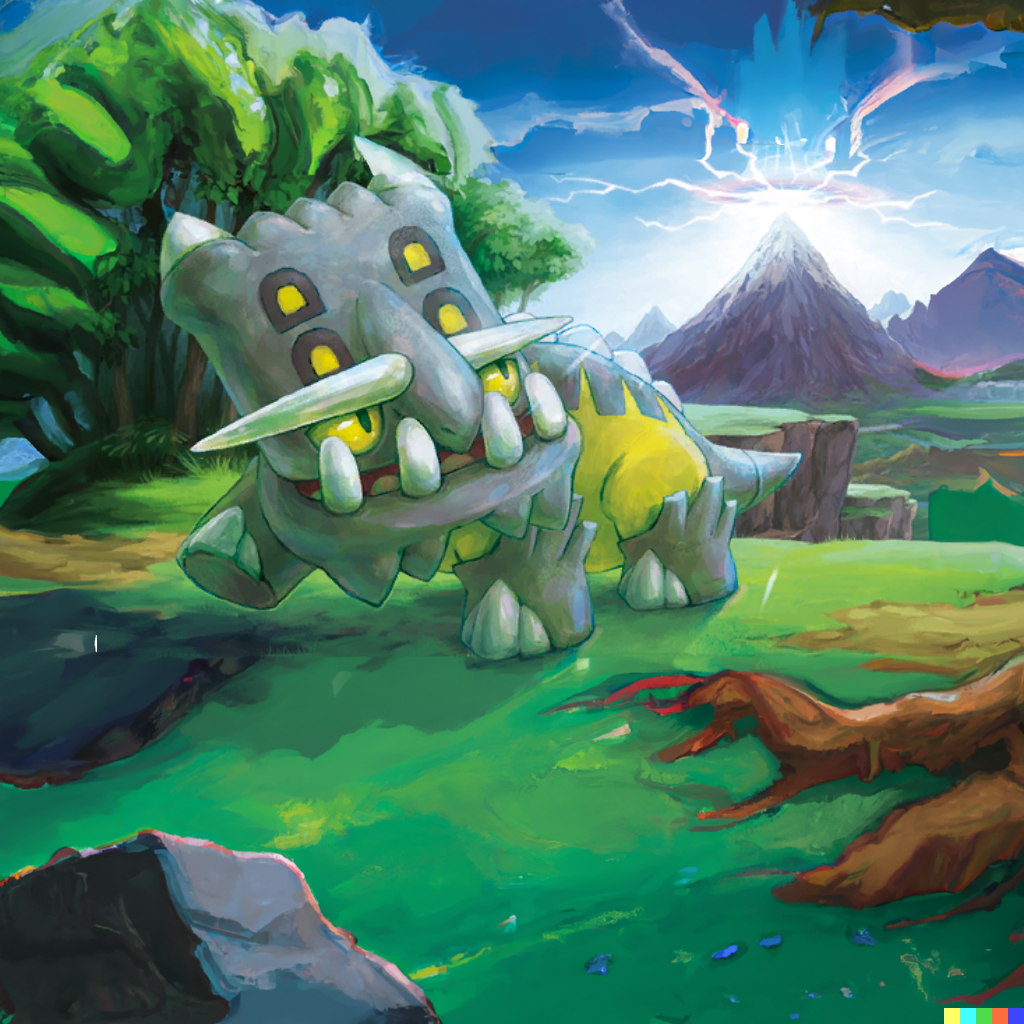

Archeops Buster Metal
A Shield Impervious to Special Energy Powered Attacks
Archeops has been dominating the online GLC scene for almost as long as it’s been playable. With access to powerful basic attackers, acceleration, draw power, and a multitude of double energies, Archeops Colorless can be an overwhelming deck for most archetypes to deal with. This has driven players to incorporate special energy removal cards like Enhanced Hammer and Giacomo into their decks as ways to slow down Archeops Colorless’s onslaught. While the splashability of these cards is nice, I wanted a way to stop Archeops Colorless in its tracks, not just slow it down.
The Don
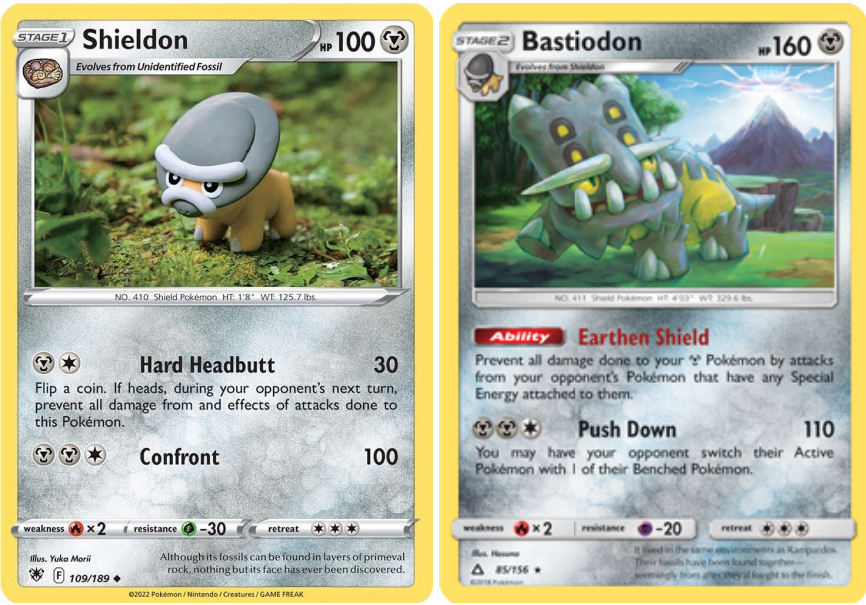
The means to stop Archeops Colorless in its tracks lie in Bastiodon’s powerful Earthen Shield Ability. With it, your metal Pokemon are immune to damage by any Pokemon with a special energy attached to them. Against a deck like Archeops Colorless, which generally only runs special energy, victory is almost guaranteed as soon as you put Bastiodon into play. Furthermore, because Shieldon evolves from Unidentified Fossil, you can use your opponent’s Pokemon Research Lab against them to get it into play faster. Although Bastiodon is easiest to get out against Archeops Colorless due to this fact, it can still be strong in other matchups as well. Many decks rely on special energies to power high energy attacks that would otherwise be difficult to use, i.e Guzzlord with Twin and Double Colorless Energy, and/or for their secondary effects. If these decks don’t respect Bastiodon, they risk being unable to use some of their crucial attackers, or worse yet, not being able to use any of their remaining attackers in late game scenarios.
Accommodating the Don
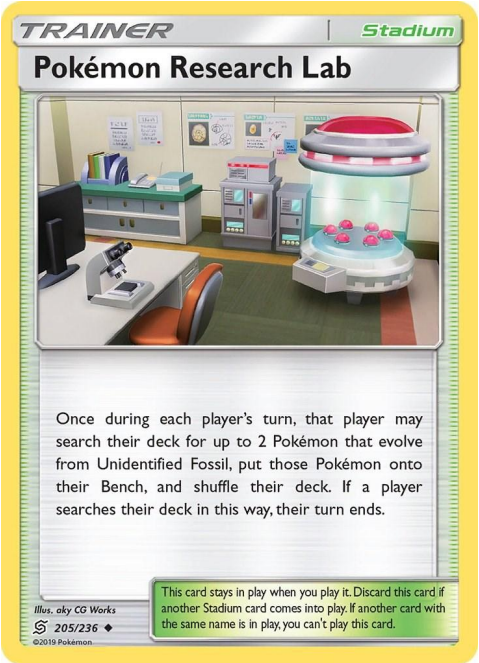
While having such a favorable matchup into Archeops Colorless is amazing, it doesn’t mean anything if you can’t beat the large quantity of decks that don’t rely on special energies. Bastiodon being a fossil is a pro against Archeops Colorless, but a con against almost every other deck. Fossils are notoriously difficult to put into play without dedicating deck space to cards that can search for Pokemon Research Lab, and it is hard to justify dedicating that space to putting a Pokemon into play that will be a dead card against a lot of decks. In order to best utilize Bastiodon, a deck needs to be able to function with multiple dead cards consistently.
The Deck
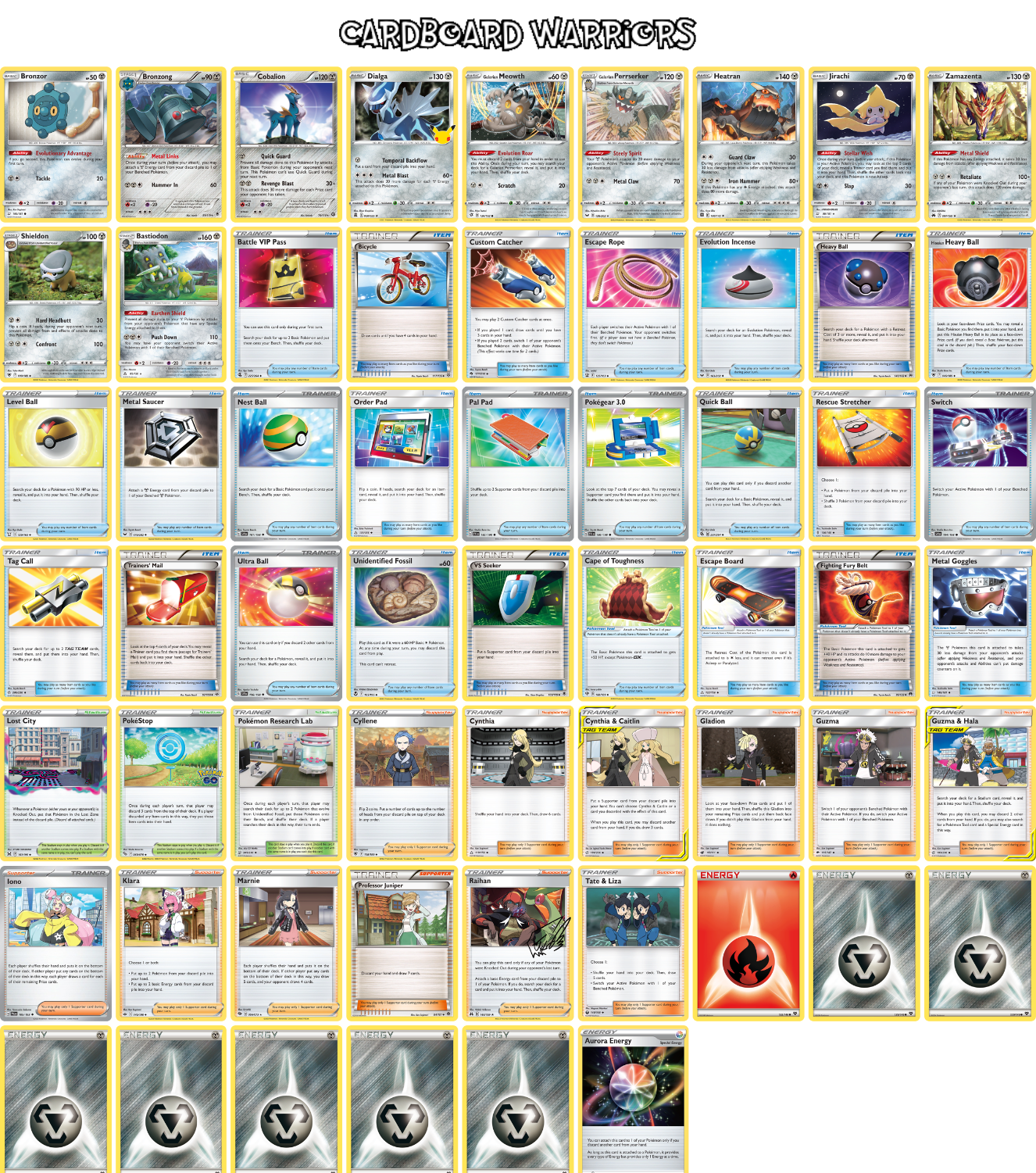
Because of the space required to utilize Bastiodon, I decided it would best be used in a PokeStop engine. PokeStop engines allow you to dig through your deck without the aid of draw Pokemon, allowing you to dedicate deck space to other options. PokeStop has synergy with Bronzong as well, dumping energies into the discard to be accelerated to your attackers. One of the strengths of this deck is how little setup is required. You don’t need to evolve any pokemon to start digging through the deck and Bronzong is the only Pokemon needed to start powering up your attackers. Thanks to Bronzor’s Evolutionary Advantage Ability allowing it to be evolved the turn it’s played if you go second, your desired boardstate can be set up as early as turn 1. Battle VIP Pass aids this aggressive setup, and is made viable through the many cards that allow you to dig for it turn 1.
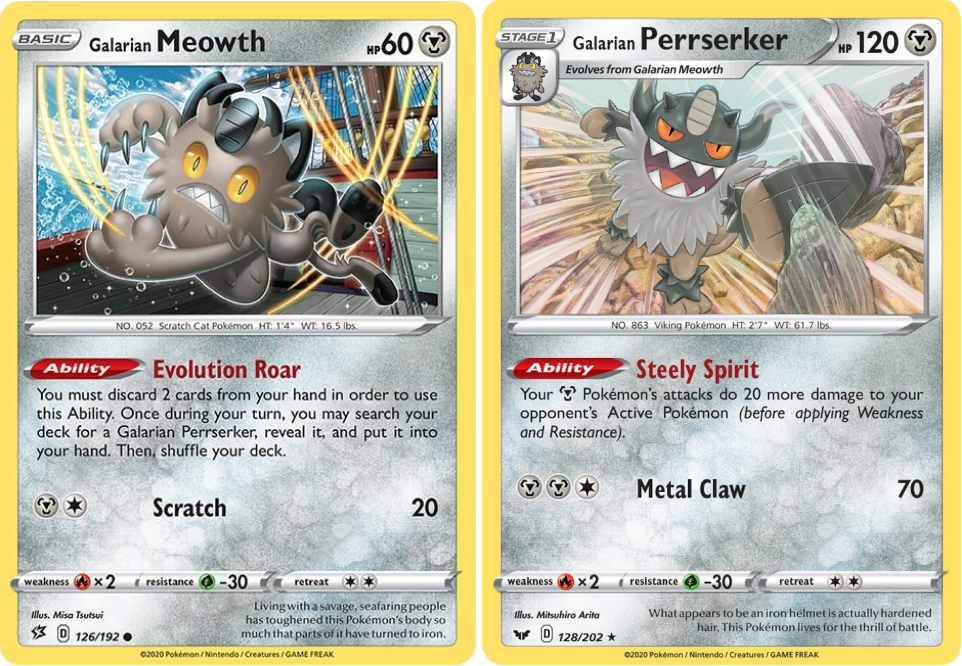
The Perrserker line provides a ridiculous amount of value to the deck. Galarian Meowth’s Evolution Roar ability allows you to reduce your hand size to draw more cards off of Bicycle and Custom Catcher, get energies into the discard pile for Bronzong to accelerate to your attackers, and discard the Bastiodon line for when the opponent’s deck does not have many special energies. The fact that you can use Evolution Roar to discard cards without adding Perrserker to your hand adds so much to Galarian Meowth’s usability. It is so good that I actually advise that you do not evolve it until you need the extra 20 damage that Perrserker provides to take a knockout. Perrserker is a strong component of the deck as well because of the sheer amount of math that 20 extra damage fixes for the deck. Perrserker turns Dialga into a strong attacker, allowing it to surpass the 130 sweet spot with 3 energies and hit for 160 with 4 energies. This allows Dialga to one shot almost every basic and stage 1 in the format with 3 energies, and most stage 2s in the format with 4 energies. Perrserker also allows Bastiodon to do 130 damage and for Zamazenta to do 130 damage without a revenge-boost if it has a fighting fury belt attached. Furthermore, Perrserker allows Heatran to do 180 damage, giving it the firepower to one shot every basic with a Fighting Fury Belt or Cape of Toughness equipped that isn’t Snorlax.
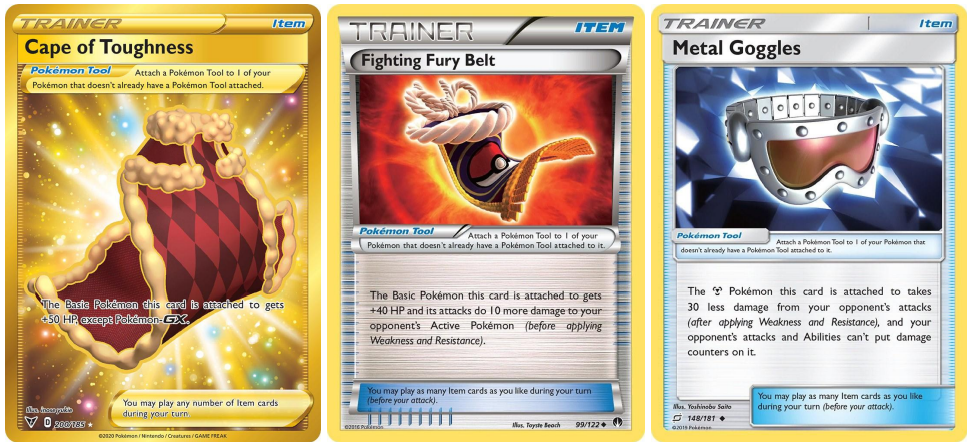
One of the ways this deck keeps up with opponents that can flood energies onto the board or keep attacking every turn is by preventing one shots through the use of tools, buying you time to power up your benched attackers. Because all of the main attackers of this deck are basics, they are afforded the luxury of using the powerful Cape of Toughness and Fighting Fury Belt to drastically increase their survivability. Metal Goggles is used over Bravery Charm for two reasons. The first is that the secondary effect can come in clutch against matchups like Lost Zone Psychic that rely on placing damage counters on your Pokemon. The second reason is that Metal Goggles can be used to protect Bastiodon from Slaking. Bossing up Bastiodon and knocking it out with Slaking is one of the few hopes Colorless has to beat this deck, due to Lazy turning off Bastiodon’s Earthen Shield ability. By attaching Metal Goggles to Bastiodon, even a Powerful Energy boosted Critical Move from Slaking fails to one shot. This gives you the chance to get Bastiodon out of the active spot and knock Slaking out with your other attackers.
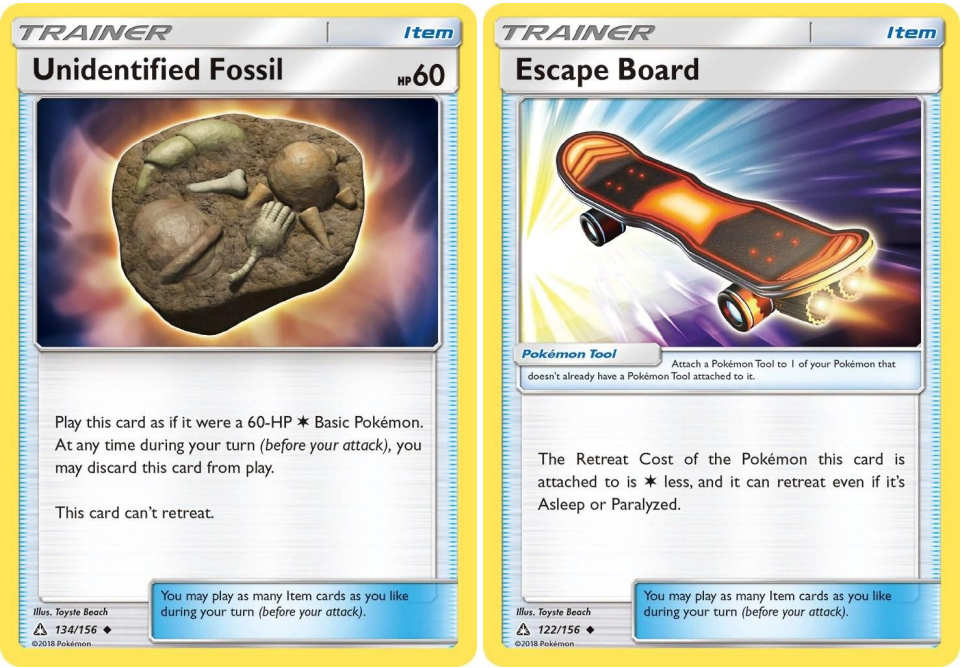
Because Bronzong and metal saucer can only accelerate energies to the bench, it is a lot easier to power up an attacker to respond to the opponent taking a prize if you can promote a pivot to the active first. Stellar Wish Jirachi with Escape Board attached is one of the best pivots in the format, as it allows you to dig through your deck for cards each time it is promoted to active. Unidentified Fossil is also a great one-time pivot for the matchups where Bastiodon isn’t as useful since it can’t be removed by Field Blower.
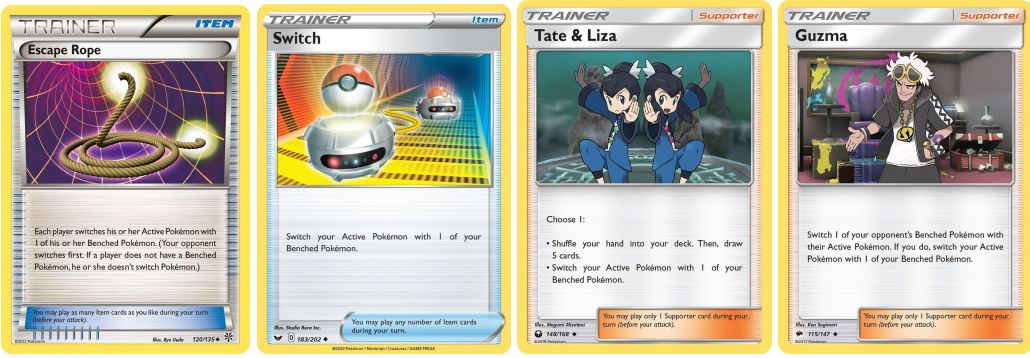
One of the downsides of Metal Pokemon is that their high retreat costs leave them susceptible to getting stuck in the active spot. Their high retreat costs also make it difficult to get Jirachi into the active spot in the early game to take advantage of Stellar Wish. The deck plays a variety of different switching cards to remedy this.
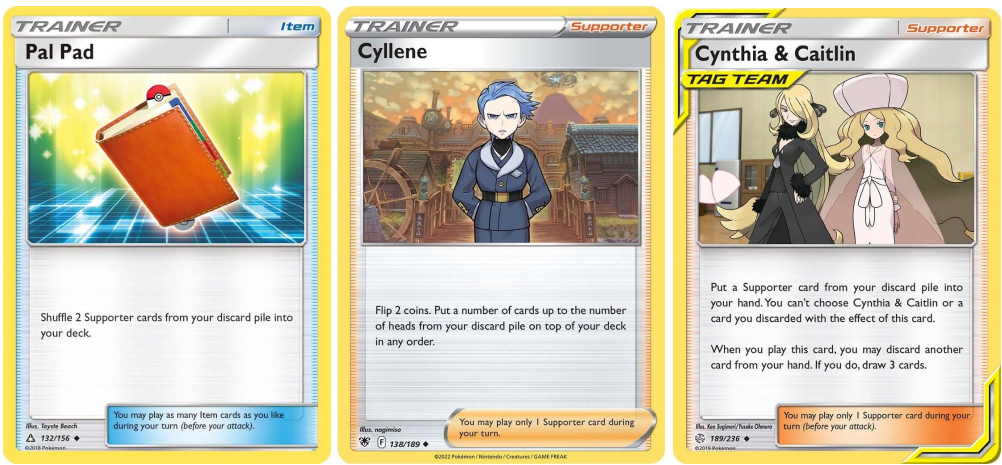
Because of how fast the PokeStop engine churns through the deck, measures need to be taken to ensure that you do not deck out. The deck does this by repeating the loop of using Cyllene to put Pal Pad back into the deck, and then using pal pad to put Cyllene and another supporter back into the deck. Secondary targets of Pal Pad normally include switching supporters to prevent the opponent from sticking a heavy Pokemon like Bronzong into the active, Klara to loop Cobalion in the late game, and Raihan. Cynthia & Caitlin and VS Seeker add extra ways to get these critical supporters out of the discard pile. Cyllene isn’t only useful as an anti-deck out measure, however. It can also be used to stack the top deck with any card in your discard pile. Whether it be a Metal Saucer for extra acceleration, Escape Board to make Jirachi a pivot again, Escape Rope to close out a game, etc., the possibilities with Cyllene are endless.
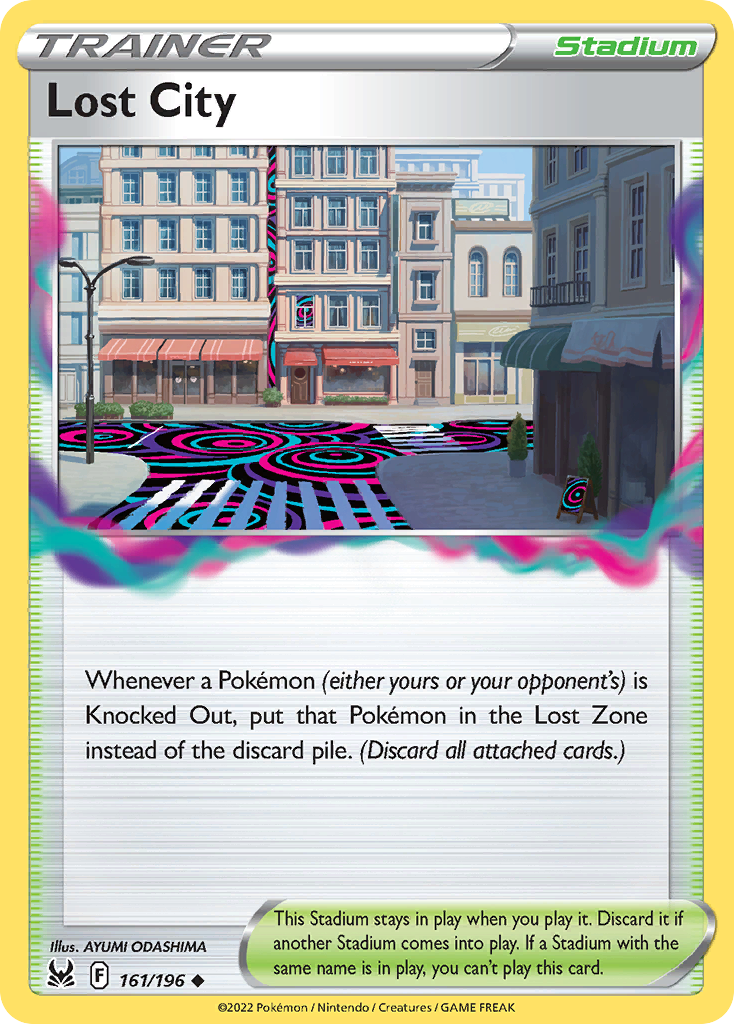
I believe that Lost City is an underutilized card in this format. There are many powerful attackers in this format that are a pain to go up against because of how much they can be looped. Examples of these include Snorlax, Kyogre, Sableye, Regieleki, Spiritomb, etc. Lost Zoning even a single one of these attackers can make these matchups a lot more winnable. Lost City is powerful because you decide when it comes into play. It requires you to be able to read the opponent’s ability to counterattack, and know which of your own Pokemon you can afford to have Lost Zoned in different scenarios. Be brave with Lost City, you’ll be surprised at how often playing Lost City benefits you more than your opponent. If it backfires, then you’ve now learned of a situation not to use it in. Thanks to the tools, the Pokemon in this deck can be difficult to knockout. This affords you the time to find a way to bump Lost City after you’ve lost zoned your targets. I haven’t had Lost City backfire in 3 tournaments, so I am confident in its inclusion in this deck.
Final Thoughts
GLC is an ever-evolving format, and it seems like people are constantly finding new archetypes every week. If you asked me a year ago, I would have told you Bastiodon was too clunky and useless in too many matchups to be worth using. Now I have two second place finishes with it. So take it from me and give any ideas that you think are too crazy to work a shot, you might surprise yourself with the results.
Deck List

Pokemon - 11
- 1 Bronzong PHF 61
- 1 Bronzor TEU 100
- 1 Cobalion STS 74
- 1 Dialga CEL 20
- 1 Galarian Meowth RCL 126
- 1 Galarian Perrserker SSH 128
- 1 Heatran BRS 100
- 1 Jirachi TEU 99
- 1 Shieldon ASR 109
- 1 Bastiodon UPR 85
- 1 Zamazenta CRZ 97
Trainers - 40
- 1 Bicycle PLS 117
- 1 Custom Catcher LOT 171
- 1 Escape Rope BST 125
- 1 Evolution Incense SSH 163
- 1 Heavy Ball BKT 140
- 1 Hisuian Heavy Ball ASR 146
- 1 Level Ball BST 129
- 1 Metal Saucer SSH 170
- 1 Nest Ball SVI 181
- 1 Order Pad UPR 131
- 1 Pal Pad SVI 182
- 1 Pokégear 3.0 SVI 186
- 1 Quick Ball FST 237
- 1 Rescue Stretcher GRI 130
- 1 Switch SVI 194
- 1 Tag Call CEC 206
- 1 Trainers' Mail ROS 92
- 1 Ultra Ball SVI 196
- 1 Unidentified Fossil SIT 165
- 1 VS Seeker PHF 109
- 1 Cape of Toughness DAA 160
- 1 Escape Board UPR 122
- 1 Fighting Fury Belt BKP 99
- 1 Metal Goggles TEU 148
- 1 Lost City LOR 161
- 1 PokéStop PGO 68
- 1 Pokémon Research Lab UNM 205
- 1 Cyllene ASR 138
- 1 Cynthia UPR 119
- 1 Cynthia & Caitlin CEC 189
- 1 Gladion CIN 95
- 1 Guzma BUS 115
- 1 Guzma & Hala CEC 193
- 1 Iono PAL 185
- 1 Klara CRE 145
- 1 Marnie CPA 56
- 1 Professor Juniper PLB 84
- 1 Raihan CRZ 140
- 1 Tate & Liza CES 148
- 1 Battle VIP Pass FST 225
Energy - 9
- 1 Aurora Energy SSH 186
- 1 Fire Energy XY 133
- 7 Metal Energy XY 139